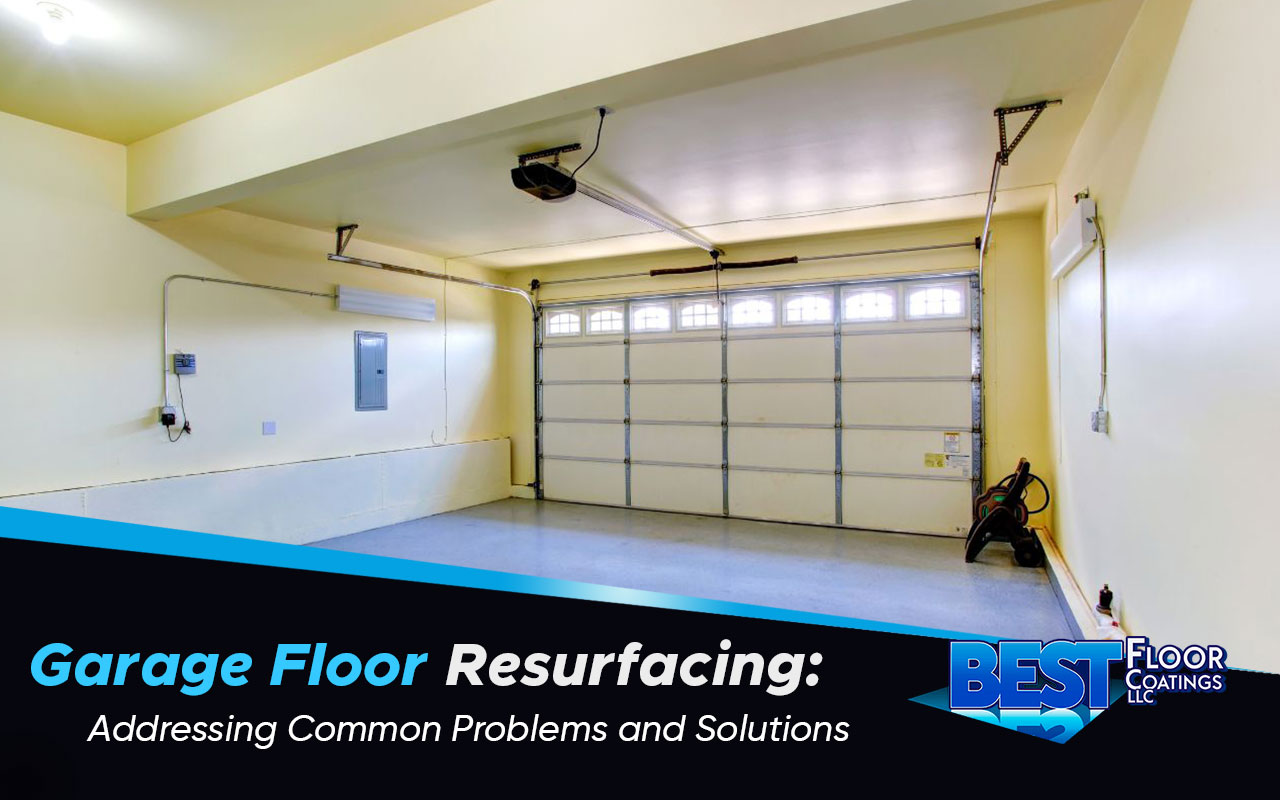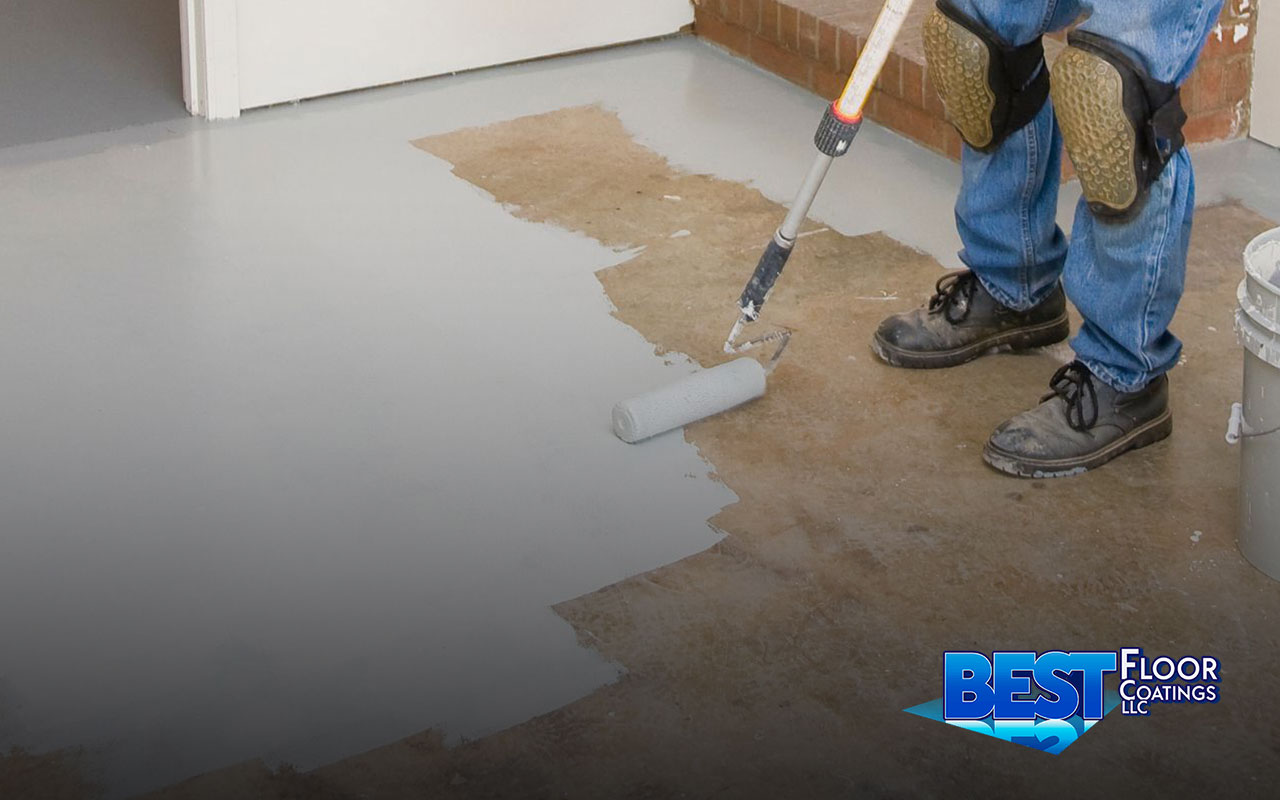
A well-maintained garage floor not only enhances the appearance of your space, but also ensures safety and durability. However, garage floors can suffer from various issues over time, making garage floor resurfacing a necessary project.
In this blog post, we will address common problems with garage floors and provide solutions for each issue.
Table of Contents
Cracks and Chips – Garage Floor Resurfacing.
Stains and Discoloration – Garage Floor Resurfacing.
Cracks and Chips – Garage Floor Resurfacing
Problem: Over time, garage floors can develop cracks and chips due to heavy weight, temperature changes, and general wear and tear. These imperfections can lead to further damage if not addressed promptly.
Solution: Use a concrete crack filler to repair the damaged area for minor cracks. For larger cracks or chips, consider using a concrete patching compound. Clean the area thoroughly before applying any repair material, and remove any loose debris. Once the repairs are complete, consider resurfacing the entire garage floor with a durable material like epoxy or polyurethane to prevent future damage.
Uneven Surfaces
Problem: Uneven garage floors can result from improper installation, soil movement, or concrete settling. An uneven surface not only looks unsightly but can also be hazardous, causing trips and falls.
Solution: Depending on the severity of the issue, you can either use a self-leveling concrete overlay or opt for professional concrete grinding services. Self-leveling overlays are suitable for minor surface irregularities, while grinding is more appropriate for significant unevenness. After leveling the floor, apply a durable resurfacing material to ensure a smooth, long-lasting finish.
Stains and Discoloration – Garage Floor Resurfacing
Problem: Garage floors are prone to staining from oil, grease, chemicals, and other substances. Over time, these stains can become deeply ingrained, making them difficult to remove and causing discoloration.
Solution:
- Begin by thoroughly cleaning the garage floor with a degreaser and a stiff-bristle brush.
- For stubborn stains, consider using a commercial-grade cleaner specifically designed for concrete surfaces.
- Once the stains have been removed, apply a high-quality epoxy or polyurethane coating to protect the floor from future staining and discoloration.
Moisture Issues – Garage Floor Resurfacing

Problem: Excessive moisture can cause various problems for garage floors, including mold and mildew growth, efflorescence, and damage to the concrete itself.
Solution: Before resurfacing your garage floor, addressing any underlying moisture issues is essential. Start by conducting a moisture test to determine if there’s an excessive amount of moisture present. If necessary, install a moisture barrier or vapor retarder to prevent moisture from seeping through the concrete. Additionally, consider using a waterproof or moisture-resistant resurfacing material like epoxy or polyurethane to protect your garage floor from future moisture-related issues.
Peeling or Delamination
Problem: Peeling or delamination occurs when the top layer of the garage floor coating separates from the concrete substrate. This issue is often caused by poor surface preparation, inadequate bonding, or an incompatible coating material.
Solution: To address peeling or delamination, remove the affected areas and prepare the surface by cleaning, repairing any damage, and ensuring proper moisture control. Choose a high-quality, compatible resurfacing material like epoxy or polyurethane, and follow the manufacturer’s instructions for proper application. Adequate preparation and suitable material will help prevent future peeling or delamination issues.
Choosing the Right Resurfacing Material
Selecting the right material for your garage floor resurfacing project is crucial to ensure durability and longevity. Some popular options include:
- Epoxy: A durable, long-lasting, and chemical-resistant material that provides a smooth, glossy finish.
- Polyurethane: Offers excellent abrasion resistance, UV stability, and flexibility, making it ideal for garage floors exposed to temperature fluctuations.
- Polyaspartic: A fast-curing, UV-stable, and chemical-resistant material that can be applied in various temperatures
Consider your specific needs and preferences when choosing a resurfacing material. Consult a professional contractor to determine the best option for your garage floor.
In conclusion, garage floor resurfacing is essential for maintaining a safe, functional, and aesthetically pleasing space.
Addressing common problems and implementing appropriate solutions can ensure a durable, long-lasting garage floor that meets your needs and expectations.
